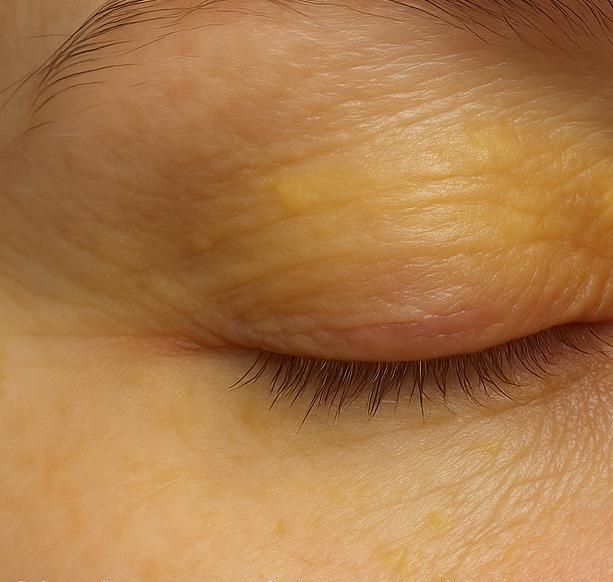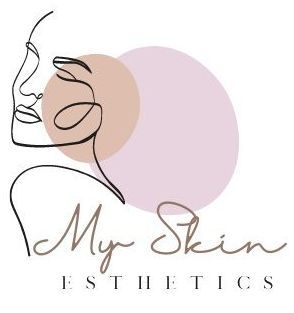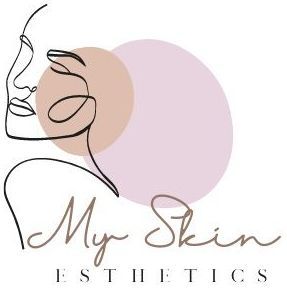Cholesterol Deposit Removal in Albuquerque, NM
Cholesterol deposits, also called xanthelasma, can show up as yellowish bumps around the eyes. At My Skin Esthetics in Albuquerque, we offer non-invasive treatment to reduce the appearance of these spots and help restore a smoother, more even skin surface.
Understanding Cholesterol Deposits and What Causes Them
Often found near the eyes, cholesterol deposits appear as soft, yellow plaques beneath the skin. These buildups are formed from fat deposits and tend to grow slowly over time. While they’re medically harmless, many people seek removal for a cleaner, more refreshed appearance.
Where Cholesterol Deposits Form and Who’s Most Likely to Get Them
Cholesterol deposits most often show up near the eyes, especially around the inner corners of the eyelids. They’re more common in adults with high cholesterol or other lipid imbalances, but they can also appear in people with normal blood levels. Genetics and age may also play a role, making them more likely to develop over time.

What to Expect When Treating Cholesterol Deposits
Skin Classic uses a fine-tipped probe to gently treat the surface of the cholesterol deposit with targeted heat. The area may darken slightly at first, forming a tiny crust that naturally falls away as the skin heals. Most clients see a visible improvement in one to two weeks with minimal discomfort and no downtime.
Why Skin Classic Is Ideal for Cholesterol Deposit Removal
Skin Classic targets cholesterol deposits with precision using high-frequency technology. It safely treats the raised spots without cutting or scarring. Most clients see noticeable improvement after just one treatment. This method is non-invasive, fast, and requires little downtime, perfect for delicate areas like the eyelids. It's a trusted option for smooth, clearer skin in Albuquerque.
Feel more confident in your skin, book your cholesterol deposit removal in Albuquerque today.
Clear unwanted cholesterol deposits with a quick, non-invasive Skin Classic treatment.
Frequently Asked Questions About Cholesterol Deposit Removal in Albuquerque
Cholesterol deposits, also called xanthelasma, are harmless but can be bothersome or affect confidence. At My Skin Esthetics, we use the Skin Classic device to treat these spots safely and effectively. Below are answers to common questions about cholesterol deposits.
How do you get rid of cholesterol deposits?
At My Skin Esthetics in Albuquerque, we treat cholesterol deposits with Skin Classic, a safe, non-invasive device that uses high-frequency technology. This method dries and flattens the raised spots without cutting or scarring.
What do cholesterol deposits feel like?
Cholesterol deposits often feel soft, slightly raised, and waxy. They’re usually painless and appear near the eyes as flat bumps that don’t go away on their own.
At what age do people get cholesterol deposits?
Cholesterol deposits near the eyes can appear as early as your 30s or 40s. They may become more common with age, even if cholesterol levels are normal.
Can you remove xanthelasma at home with a needle?
No, it’s not safe to try removing xanthelasma at home with a needle. The skin around the eyes is delicate, and DIY methods risk infection, scarring, or permanent damage. At My Skin Esthetics, we offer professional removal in Albuquerque using Skin Classic.
What makes xanthelasma worse?
Xanthelasma may worsen over time if left untreated. Rubbing the area or using harsh creams can irritate the skin and make deposits more visible. Professional treatment prevents further irritation and ensures safe removal.
Our Other Services at My Skin Esthetics:
Skin Conditions Treated with Skin Classic:
Facials:
Standalone Treatments:
Learn more about how Skin Classic works.
Visit the Skin Classic Treatment page
Schedule cholesterol deposit removal in Albuquerque today.
Improve the look of yellow cholesterol deposits.

